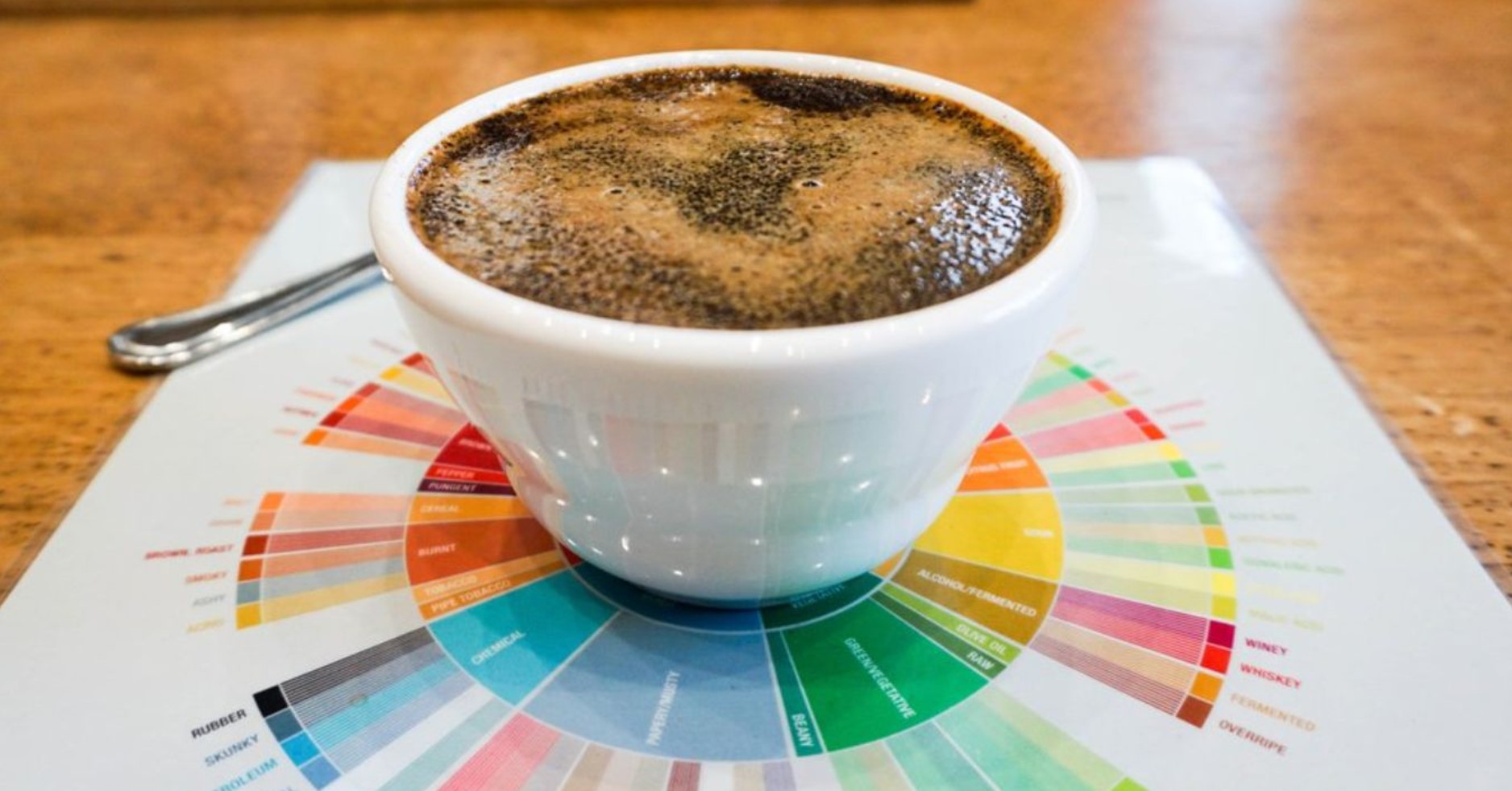
Navigating the Coffee Flavor Wheel: A Practical Guide
Welcome to the ultimate guide on navigating the coffee flavor wheel. If you’re a coffee enthusiast, barista, or simply someone who appreciates a great cup of coffee, this article is for you. Coffee tasting is an art that involves understanding and identifying the various flavors and aromas that make each cup unique. In this guide, we will explore the intricacies of the coffee flavor wheel, providing you with the knowledge and tools to enhance your coffee-tasting experience. So grab your favorite mug, and let’s embark on a flavorful journey!
Navigating the Coffee Flavor Wheel: Unveiling the Basics
Before we dive into the depths of coffee tasting, let’s start with the basics of the coffee flavor wheel.
What is the Coffee Flavor Wheel?
The coffee flavor wheel is a valuable tool used by coffee enthusiasts and professionals alike to categorize and describe the diverse range of flavors and aromas found in different coffee beans. It was first introduced by the Specialty Coffee Association of America (SCAA) in 1995 and has since become a standard reference for coffee tasting and evaluation.
The primary purpose of the coffee flavor wheel is to provide a common language for communicating the sensory experiences associated with various coffee samples. It allows tasters to identify and articulate the specific tastes and fragrances present in a cup of coffee, helping to enhance the overall coffee appreciation experience.
Components of the Coffee Flavor Wheel
The coffee flavor wheel is typically divided into several categories, each representing a specific group of flavors and aromas. Here are the main components of the coffee flavor wheel:
- Fruity: This category includes flavors reminiscent of different fruits, such as berries, citrus fruits, and tropical fruits.
- Floral: The floral category encompasses aromatic scents similar to flowers like jasmine, lavender, and chamomile.
- Nutty: In this section, you’ll find flavors associated with various nuts, like almonds, hazelnuts, and walnuts.
- Spicy: The spicy category captures coffee with hints of spices like cinnamon, cloves, and cardamom.
- Sweet: This group includes flavors that evoke sensations of sweetness, such as caramel, chocolate, and honey.
- Sour: The sour category represents the tangy and acidic notes found in some coffee varieties.
- Bitter: In this section, you’ll find flavors reminiscent of bitter chocolate, cocoa, and roasted herbs.
- Roasted: The roasted category includes flavors that highlight the coffee bean’s roasting process, such as smoky and charred notes.
Coffee Flavor Wheel Categories and Example Flavors
|
Category |
Example Flavors |
|
Fruity |
Berries, Citrus, Tropical Fruits |
|
Floral |
Jasmine, Lavender, Chamomile |
|
Nutty |
Almonds, Hazelnuts, Walnuts |
|
Spicy |
Cinnamon, Cloves, Cardamom |
|
Sweet |
Caramel, Chocolate, Honey |
|
Sour |
Lemon, Green Apple, Grapefruit |
|
Bitter |
Dark Chocolate, Cocoa, Roasted Herbs |
|
Roasted |
Smoky, Charred, Toasted |
By using the coffee flavor wheel, coffee professionals and enthusiasts can better communicate and understand the nuances of different coffee profiles. It enables them to appreciate the diversity of flavors in coffee beans from various regions and cultivars, adding to the overall enjoyment of the coffee tasting experience. Whether you’re a seasoned coffee connoisseur or just beginning your coffee journey, the coffee flavor wheel is a valuable tool to have in your tasting toolkit.
Understanding the Categories of the Coffee Flavor Wheel
The coffee flavor wheel is typically divided into the following categories:
- Fruity: This category encompasses the fruity and citrusy notes found in some coffee varieties, such as berries, apples, and oranges.
- Floral: Floral notes represent the aromatic and delicate scents similar to jasmine, lavender, or chamomile.
- Nutty: In this category, you’ll find coffee beans with nutty flavors like almonds, hazelnuts, or walnuts.
- Spicy: Coffee with spicy undertones often offers hints of cinnamon, cloves, or black pepper.
- Sweet: Sweet coffees evoke sensations of sugary flavors, like caramel, honey, or chocolate.
- Sour: The sour category captures the tangy and acidic characteristics of certain coffee beans.
- Bitter: Bitter notes are reminiscent of dark chocolate, cocoa, or bitter herbs.
- Roasted: This category represents the roasted and smoky aspects of coffee.
Now that we’ve established the foundation, let’s explore how to navigate the coffee flavor wheel effectively.
Enhancing Your Coffee Tasting Experience
Tasting coffee is an art that requires practice and attentiveness to detail. Here are some practical tips to enhance your coffee tasting experience:
- Use Freshly Roasted Beans
To truly appreciate the flavors of coffee, start with high-quality, freshly roasted beans. Freshness plays a crucial role in preserving the distinct taste profiles.
- Grind Just Before Brewing
For optimal results, grind your coffee beans just before brewing. This ensures that the flavors and aromas are retained in the grounds until extraction.
- Pay Attention to Water Quality
The water used for brewing affects the taste of your coffee. Use filtered water with balanced mineral content for the best results.
- Experiment with Brewing Methods
Try different brewing methods, such as pour-over, French press, or espresso, to explore how each method brings out unique flavors.
- Allow Coffee to Cool Slightly
When tasting coffee, let it cool slightly to avoid scalding your taste buds. This allows you to detect more subtle flavors.
- Engage All Your Senses
Coffee tasting is a multisensory experience. Take time to observe the aroma, color, and texture of the coffee in addition to the taste.
Navigating the Coffee Flavor Wheel: Delving into Flavor Profiles
Let’s dive deeper into the various flavor profiles found within the coffee flavor wheel:
Fruity: Exploring Nature’s Bounty
Fruity coffees offer a delightful array of flavors sourced from nature’s finest produce. LSI Keywords: Tropical, Juicy, Citrusy
Exploring Fruity Coffees:
- Tropical Paradise: Experience the taste of the tropics with fruity notes reminiscent of pineapple, mango, and passion fruit.
- Juicy Citrus: Delight in the zesty and refreshing flavors akin to oranges, lemons, and tangerines.
- Berry Bonanza: Discover the sweetness of berries like strawberries, blueberries, and raspberries in your coffee.
Floral: A Fragrant Symphony
The floral category offers coffees with aromatic and perfumed qualities. LSI Keywords: Fragrant, Blossom, Aroma
Appreciating Floral Coffees:
- Fragrant Jasmine: Immerse yourself in the enchanting aroma of jasmine flowers in your coffee.
- Blossom Elegance: Experience the delicate and sophisticated notes reminiscent of blooming flowers.
- Aromatic Lavender: Allow the soothing scent of lavender to transport you to a serene coffee-tasting experience.
Nutty: The Comfort of Nuts
Nutty coffees provide a comforting and familiar taste. LSI Keywords: Almonds, Creamy, Hazelnuts
Savoring Nutty Coffees:
- Almond Bliss: Indulge in the creaminess of almond flavors that add a velvety touch to your coffee.
- Hazelnut Dream: Experience the delightful hazelnut aroma that complements the coffee’s richness.
- Pecan Perfection: Explore the subtle pecan notes that lend a unique nuttiness to your brew.
FAQs about Navigating the Coffee Flavor Wheel
Q: What makes the coffee flavor wheel important for coffee enthusiasts?
A: The coffee flavor wheel is essential for coffee enthusiasts as it helps them identify and describe the various flavors and aromas found in different coffee beans. It enhances the coffee tasting experience and allows enthusiasts to appreciate the complexities of coffee better.
Q: Can I use the coffee flavor wheel at home?
A: Absolutely! The coffee flavor wheel is a versatile tool that can be used by anyone at home. It helps you become more aware of the flavors you encounter in your coffee, making every cup a unique experience.
Q: Are there specific coffee varieties that fit multiple flavor categories?
A: Yes, some coffee varieties exhibit a wide range of flavors, fitting into multiple categories of the coffee flavor wheel. For example, Ethiopian coffee can have both fruity and floral notes, making it a versatile choice.
Q: How can I develop my palate for coffee tasting?
A: Developing your palate for coffee tasting requires practice and exposure to different coffee varieties. Attend coffee cupping sessions, taste various single-origin coffees, and focus on identifying the nuances in each cup.
Q: Are there any specific coffee regions known for certain flavor profiles?
A: Yes, different coffee-growing regions around the world are known for specific flavor profiles. For instance, Ethiopian coffee is famous for its fruity and floral notes, while Latin American coffees often exhibit bright and citrusy flavors.
Q: Is it necessary to follow the flavor wheel when tasting coffee?
A: While it’s not mandatory, using the coffee flavor wheel enhances your tasting experience and helps you articulate the flavors more effectively. It also aids in sharing your coffee experiences with others in a more precise manner.
Navigating the coffee flavor wheel is an enriching journey that opens up a world of flavors and aromas. By understanding the categories and flavor profiles, you can elevate your coffee-tasting experience to new heights. Remember to explore different coffee beans, brewing methods, and sensory observations to develop your coffee palate further. So, take a sip, savor the moment, and enjoy the delightful symphony of flavors in each cup of coffee.
